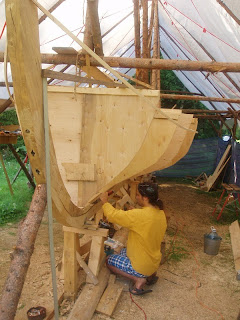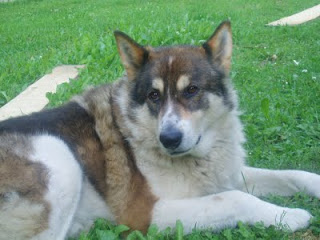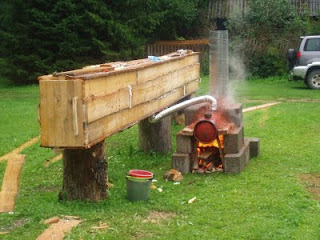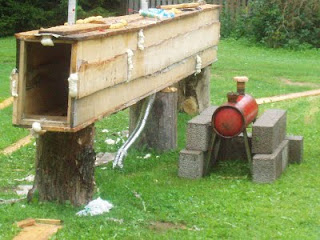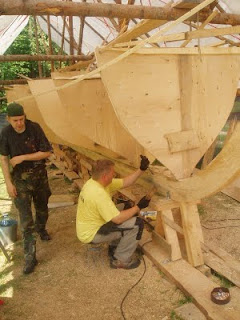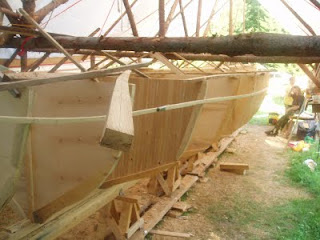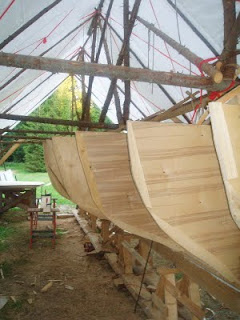
Tasapisi lisame planke, hetkel sai peale kolmas plangurida. Viikinglaeva plangud on kinnitatud üksteise külge sepisneetidega. Muinasajal pandi neete isegi kuni 30 cm vahedega. Tänapäeva ohutusnormid aga nõuavad, et laevaneedid oleksid maksimaalselt 11 cm vahedega. See aga tähendab palju-palju-palju neetimist.
Slowly we're getting the ships sides up, right now we just finished the third row of planks. Viking ships were built by riveting planks to eachother. In ancient times the boats had rivets up to 30 cm apart. Nowadays Northern boatbuilding and safety standards require the rivets to be no more than 11 cm apart. That means lots and lots and lots of riveting.
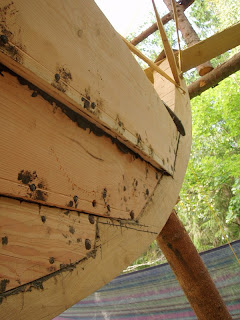

Viikinglaeva plangud keerduvad täävide juures üsna kõrgele, mistõttu on lihtne ajada tääve väga kõrgeks. Laeva keskel aga on plangud peaaegu horisontaalsed, moodustades laevale laia "kõhu".
The planks of a viking ship twist very high near the fore and aft, therefore it is easy to raise the ends of the ship very high. In the middle of the ship the planks are almost horizontal, making a wide "belly".

Kolmanda planguringi valmimist valvab laevakoer Kaaro.
Third plankrow is being closely guarded by our boatdog Kaaro.






